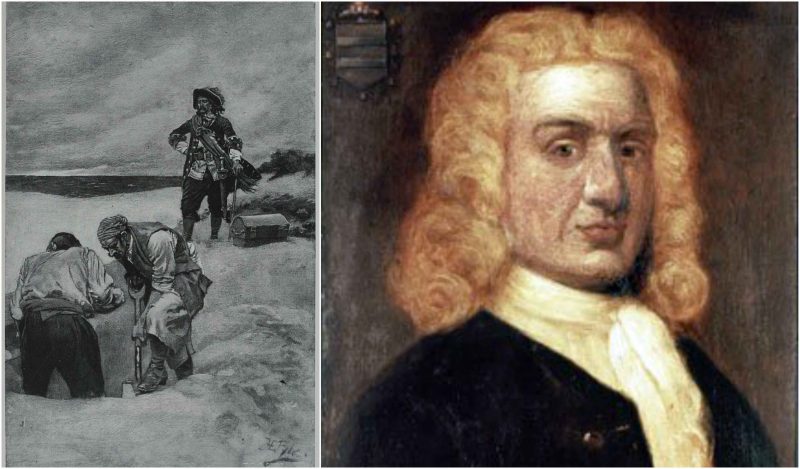Captain William Kidd was a Scottish privateer during the 17th century; a pirate captain commissioned by the government to attack and rob enemy ships. Later, a privateer would share the spoils with the government.
Kidd was patrolling the waters of the Indian Ocean and didn’t have much luck with finding pirate ships to attack, so at some point, he turned into a pirate himself. Unfortunately, in the meantime, there had been a switch in the opinion towards piracy in England, and it was made an illegal act.
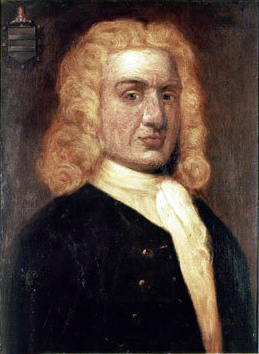
Kidd was known to be born in Greenock, Scotland, in 1645, but apparently, he had given false information about his birth town since it was later revealed that he was born in Dundee. He was the son of a seaman – Captain John Kyd who was lost at sea. Kidd later settled in New York City, where he moved in high social circles and befriended many prominent colonial citizens. That’s how he met his wife, Sarah Bradley Cox Oort in 1691, who had been widowed twice and had inherited a fortune from her first husband.
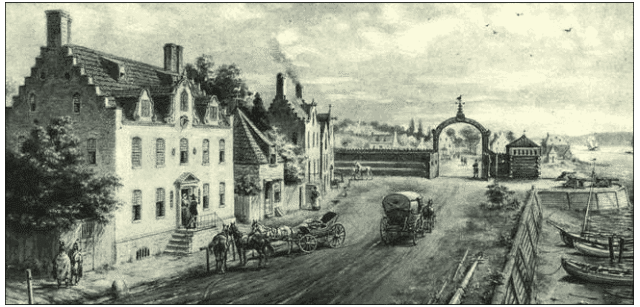
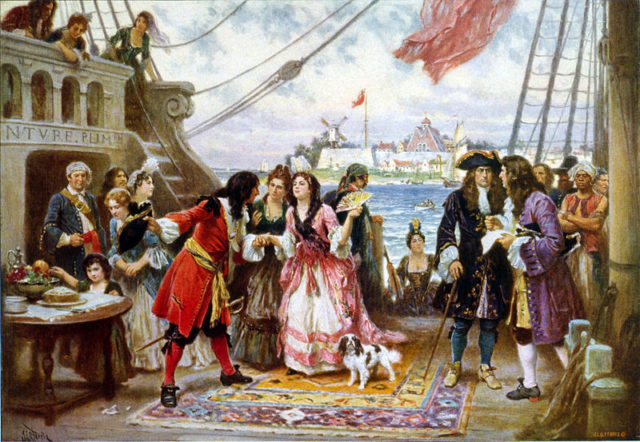
With his wife’s fortune, Kidd acquired a vessel named Blessed William and became a successful privateer who was authorized by the English government to take charge of an expedition against pirates in the Indian Ocean. He was supposed to take control of the pirates who robbed the British ships in the Ocean and to send the cargo safely back to Britain. In the meantime, his ship was stolen by the notorious English pirate Robert Culliford.
Kidd’s expedition started in 1697, on a new ship called Adventure Galley equipped with 34 cannon, oars, and 150 men, and sailed off from the River Thames. The men had been personally chosen by Kidd, who selected only the best and most loyal officers. For a while, Captain Kidd couldn’t find any pirate ships even though they were frequent in the Indian Ocean, preying on British cargo. Being in a desperate situation and on a leaking ship, Kidd turned to piracy.
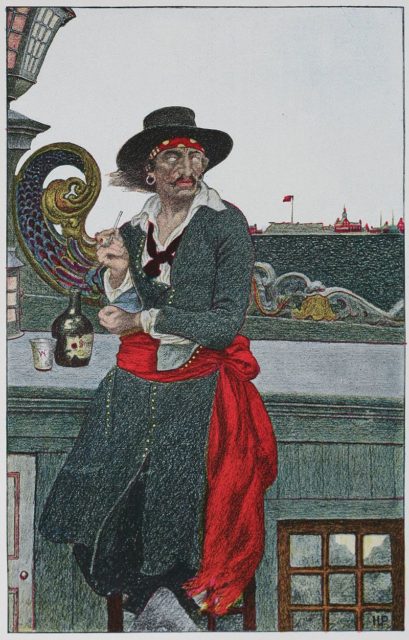
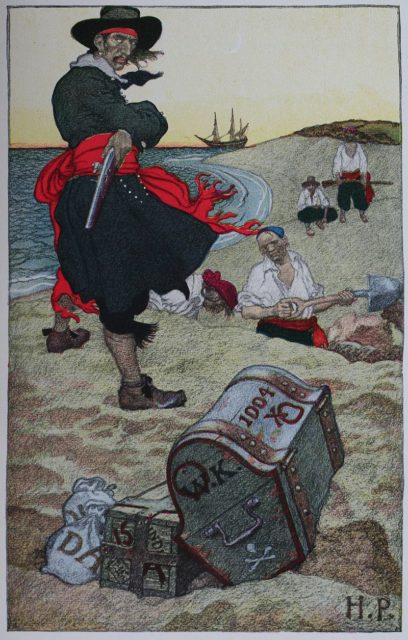
In 1698, he raised a French flag on his boat and attacked and took over the Quedagh Merchant, which contained silk, muslin, calico, sugar, opium, iron, and saltpeter. It was rumored that it was worth £70,000. Kidd abandoned his ship and moved with his crew onto the Quedagh Merchant, changing its name to Adventure Prize. Soon after he did the same with another ship, Rouparelle. But the capture of the boats caused a scandal throughout the British Empire because it damaged the status of Britain’s safe trading along the African and Indian coasts.
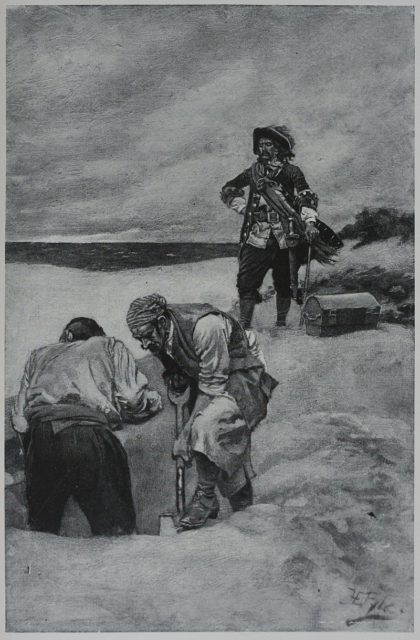
Even though Kidd felt that that the captures were in the legal frame of his job and orders given by the British Empire, rumors spread that he had become a pirate. In the two years that he spent on the open sea, he didn’t know that England changed its attitude towards piracy, making it a criminal act.
When he arrived in the West Indies in 1699, almost all of his crew had abandoned him, with only 13 men remaining on his ship. He managed to negotiate a pardon from the English authorities by accusing his crew of piracy, but the investor of his expedition, Lord Richard Bellomont, had him arrested. Kidd hired two lawyers and was shocked when he found out that he was accused of not only piracy but murder.
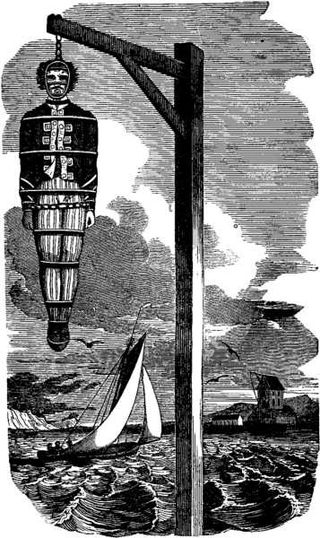
He was publicly shamed during the trial, which ended with Kidd being sentenced to death. He was hanged in 1701. But even that didn’t pass properly. The first rope around his neck broke and he was actually hanged twice. His corpse was left to rot in the Thames River as an example to whoever had aspirations to become a pirate.
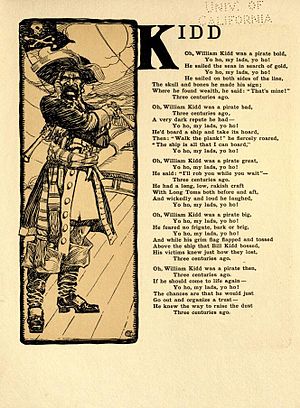
After his death, his legend grew, especially the stories of buried treasure. Authors such as Robert Louis Stevenson with his book Treasure Island and Edgar Allan Poe’s The Gold Bug helped fuel the myth.
